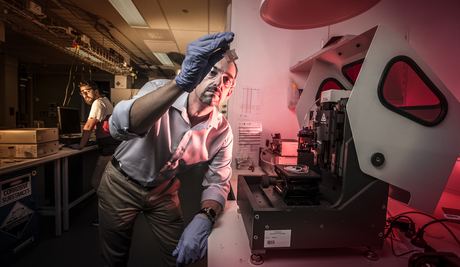ACES sets pace for additive manufacturing revolution

The ARC Centre of Excellence for Electromaterials Science (ACES) at the University of Wollongong is helping to set the pace in the next revolution in additive manufacturing.
Researchers have started to develop 3D-printed materials that morph into new structures, post-production, under the influence of external stimuli such as water or heat - hence the name, 4D printing.
So, as in 3D printing, a structure is built up layer by layer into the desired shape, but these new materials are able to transform themselves from one shape into another, much like a child’s Transformer toy.
This science promises advancement in myriad fields - medicine, construction, automation and robotics to name a few. ACES researchers have turned their attention to the medical field of soft robotics, manufacturing a valve that actuates in response to its surrounding water’s temperature.
ACES Professor Marc in het Panhuis said it was the cleverness of the valve’s creation that was remarkable. “The cool thing about it is, is it’s a working, functioning device that you just pick up from the printer,” he said.
“There’s no other assembly required.” The materials scientist said the valve, a 3D printed structure, possessed actuators that are activated solely by water.
“So it’s an autonomous valve, there’s no input necessary other than water; it closes itself when it detects hot water,” he said. The ACES Chief Investigator said the ACES group was the first to combine printing a 4D device with four different cartridges simultaneously, while using tough gels with the incorporated actuating materials.
A lighter, smarter magnetoreceptive electronic skin
Researchers have developed an innovative e-skin that facilitates a new level of interaction...
Single transistor used to implement neuromorphic behaviour
Researchers have demonstrated that a single transistor can mimic neural and synaptic behaviours,...
Novel fabrication technique for flexible electronics
Researchers have harnessed nature's intrinsic hierarchical fractal structures to improve the...





